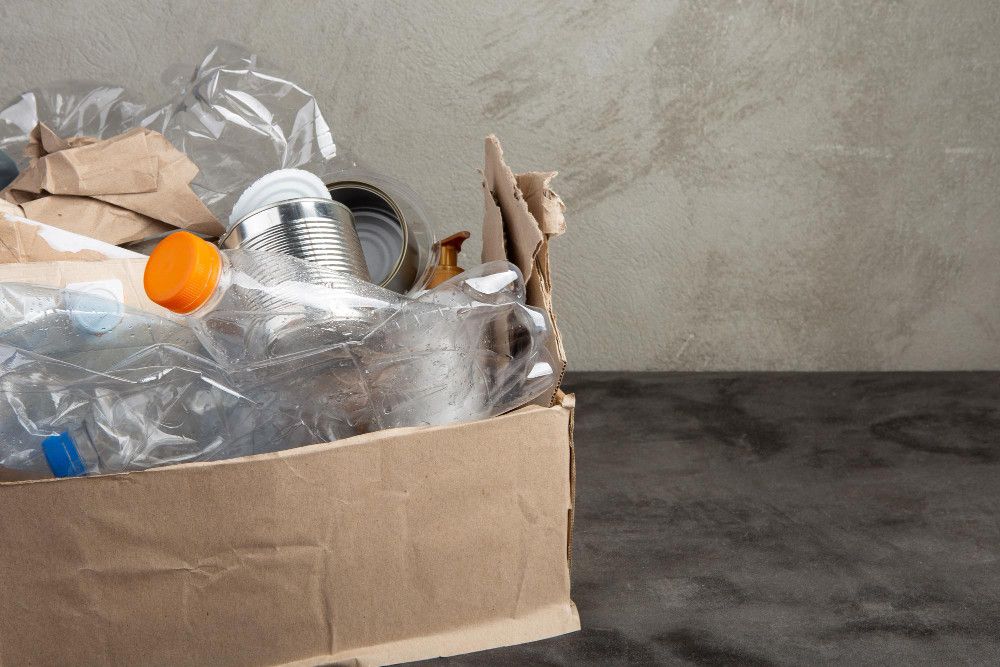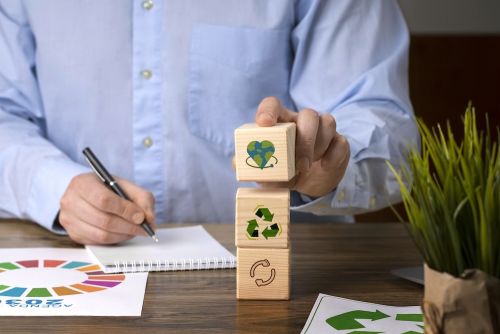Extended Producer Responsibility (EPR) for Packaging: Country-by-Country Comparison


Cut through the green tape
We don't push agendas. At Net Zero Compare, we cut through the hype and fear to deliver the straightforward facts you need for making informed decisions on green products and services. Whether motivated by compliance, customer demands, or a real passion for the environment, you’re welcome here. We provide reliable information—why you seek it is not our concern.
Introduction
Extended Producer Responsibility (EPR) for packaging makes producers financially and/or operationally responsible for the post-consumer packaging waste they generate. In the EU, the Packaging and Packaging Waste Directive requires all Member States to implement EPR schemes by end of 2024. Each country, however, has leeway in how it structures fees, obligated parties, and implementation timelines – resulting in significant variations across Europe. Typically, the obligated “producer” is the company that places packaged products on the market (the manufacturer/brand owner or importer) rather than the packaging material manufacturer. The EPR fees – often paid to a Producer Responsibility Organization (PRO) – are usually modulated by packaging material type (and increasingly by recyclability), meaning materials like plastic (especially hard-to-recycle plastics) tend to incur higher fees than easily recyclable materials like cardboard or metal. In some cases, if a producer opts not to participate in a PRO, they must pay a steep government “product fee” or tax instead (e.g. in Hungary and historically in Denmark and Bulgaria). Small enterprises are often exempt or subject to simplified reporting – for example, France allows companies under a small annual packaging volume to pay a flat token fee, and the UK’s EPR scheme differentiates “small” vs. “large” producers for reporting obligations.
EPR Packaging Fees and Obligations by Country (EU)
The table below summarizes, for each country, who pays the EPR fee (i.e., the obligated party) and fee levels for different packaging material types. Fee figures are given in €/tonne (Euro per metric ton of packaging) for household/consumer packaging (unless stated otherwise). Note that fees can vary within a material category based on packaging format or recyclability (many countries have lower fees for easily recyclable packaging and punitive fees for non-recyclable packaging). “N/A” indicates not applicable or no data published. All information is based on latest available data, mostly for the year 2025.
Country | Who Pays (Obligated Producer) | Plastic Packaging (€/tonne) | Paper/Cardboard (€/tonne) | Glass (€/tonne) | Metal (€/tonne) | Composite (Beverage Cartons) (€/tonne) | Notes |
Austria | Product manufacturer/ importer of packaged goods (fills or imports packaging) | 990 (household plastic) | 190 (paper) | 102 (glass) | 450 (steel), 480 (aluminum) | 970 (beverage cartons); 1080 (other composites) | |
Belgium | Company placing household packaging on market (often the brand owner). (Industrial packaging covered by separate scheme.) | 271–1955 (for most plastics). Up to ~3909 for non-recyclable or PVC-containing plastics | 150 (cardboard) | 96 (glass bottles/jars) | 112 (steel), 48 (aluminum) | 818 (beverage cartons) | |
Bulgaria | Company that markets packaged goods domestically (producers/importers). | 255 BGN (plastic beverage bottles up to 3 liters), 232 BGN (All other plastic) | 218 BGN | 259 BGN | 119 BGN (steel), 279 BGN (aluminum) | 298 BGN | |
Croatia | Packaging producer or importer (Environmental Protection Fund manages scheme). | 54.42 – 199.08 (plastic; PET bottles 54.42; other plastics 99.54;plastic bags 199.08 | 49.77 (paper/cardboard) | 19.91 (glass) | 29.86 (steel cans), 54.4 (aluminum cans) | 54.42 (beverage carton for drinks; others 99.5) | |
Cyprus | Company that places packaging on market (typically importer/packer; often handled through Green Dot Cyprus PRO). | 100.59 (PET) | 116.61 (Cardboard liquid containers) | 27.61 (Glass) | 90.62 (Metal) | n/a | |
Estonia | Company placing packaging on market (must join a packaging recovery organization). | 230 (Plastic - monomaterial), 354,2 (Plastic beverage bottles) | 86.25 (paper and carton - monomaterial) | 84 (Glass and ceramics) | 182 (steel), 145 (aluminum) | 86.25 (Beverage carton) | |
Finland | Company that packs or imports product (all companies, no turnover threshold as of 2024). | 159–339 (depends on plastic type: e.g. recyclable mono-plastic €159/t; multi-material plastic €219; PVC/complex €339) | 73 (corrugated cardboard); up to 219 (liquid cartons) | 76 (glass, ordinary) | 63 (metal packaging, mainly steel; aluminum also charged similarly) | 219 (beverage carton liquid packaging; counted in paper Class C) | |
France | Company that manufactures or imports packaged products for consumer use (must register with CITEO or Léko PRO). | 53.52- 160.55 | 214.43 (paper/cardboard) | 16.4 (glass) | 53.5 (steel), 186.50 (aluminum) | 380 (beverage cartons) | |
Greece | Company that places packaged products on the Greek market. | 70.50 (plastic) | 55.50 (paper) | 18.50 (glass) | 21.00 (metal) | 70.50 (composite) | |
Hungary | Company that manufactures or imports packaged goods (distributors) – since 2023 handled via state-run concession (MOHU). | HUF 219 per kg (plastic) | HUF 173 per kg (paper) | HUF 77 per kg (glass) | HUF 186 per kg (metal) | HUF 168 per kg (“other” packaging or composites) | |
Ireland | Company that supplies packaged goods (packer/filler or importer) to the Irish market (“Major Producers” under Repak scheme). | 142.03 (recycled plastic); 446.07 (nonrecycled plastic) | 28.54 (recycled paper/Cardboard) | 7.41 (recycled glass) | 64.82 (steel); 3.68 (aluminum) | 142.03 (recycled composite); 446.07 (nonrecycled composite) | |
Italy | Company that produces or imports packaging or packaged goods (must join CONAI consortia). | 24–655 (plastic tiered by recyclability, effective January 2025. Fees to range between 40-790 from July 2025 | 65 (ordinary paper; higher for special paper: up to €305/t for difficult-to-recycle paper) | 35 (glass, from June 2025; €40/t from 1 January, 2026) | 5 (steel), 12 (aluminum) | 65–305 (beverage cartons fall under paper bands) | |
Latvia | Company that manufactures, imports or sells packaged goods. | 619 (plastic) | 57 (paper/cardboard) | 112 (glass) | 86 (steel), 99 (aluminum) | 275 (beverage carton) | |
Lithuania | Company placing packaging on market. | 364 (plastic, recyclable), 52 for “non-recyclable PET” | 161 (paper, recyclable) | 132 (glass, recyclable) | 168 (metal, ferrous or aluminum) | 251 (combined material, recyclable) | Source (2024 fees) |
Luxembourg | Company that places packaging on market. | 195.70-719.20 (plastic) | 40.20 (paper/cardboard) | 17.70 (glass) | 27.10 (steel), 14.50 (aluminum) | 200 (composite) | |
Malta | Company that places packaged goods on market. | 205 (plastic) | 203 (paper & cardboard) | 147 (glass) | 207 (steel); 202 (aluminum) | n/a | |
Netherlands | Company that first supplies packaged product to NL market (includes importers). | 1,220 (rigid plastic); 1,320 (flexible/specialized plastics) | 17 (paper/cardboard) | 100 (glass) | 300 (aluminum); 360 (other metals) | 880 (beverage carton) | |
Portugal | Company that places packaged goods on market. | 447.10 (plastic) | 260.20 (paper) | 77.10 (glass) | 354.70 (steel), 99.10 (aluminum) | 437.60 (beverage carton) | |
Romania | Company that places packaging on market (producers or importers; can fulfill via a PRO or self-compliance). | 737 RON (PET) | 473 RON (glass household) | 429 RON (steel household), 737 RON (aluminum household) | n/a | ||
Slovenia | Company placing packaging on market. | 329 (plastics); 288.50 plastics, PET) | 12.50 (paper) | 9 (glass) | 329 (steel); 288.50 (aluminum) | 329 (composite packaging, paper) | |
Sweden | Company that places packaging on market. | 11900 SEK (recyclable plastic); 17100 SEK (nonrecyclable plastic) | 7000 SEK (recyclable paper); 10000 SEK (partially or nonrecyclable paper) | 2008 SEK (glass) | 2070 SEK (steel), 1090 (aluminum) | n/a | |
United Kingdom (🇬🇧 Note: not EU) | Business that supplies packaged goods to UK market – new EPR splits into “producer” roles; for household packaging, usually the brand owner or main importer bears the cost | £485 (plastic) | £215 (paper/board) | £240 (glass) | £435 (aluminum) | £455 (fiber-based composites) |
Variation in EPR Fees Across Europe
Although most European countries have EPR for packaging schemes, the fees charged per tonne vary significantly. In 2025, aluminum packaging fees, for example, range from just €48 in Belgium to €1 090 in Sweden, with countries like Austria (€480), Croatia (€54.40), Estonia (€145), France (€186.50), Latvia (€99), and the Netherlands (€300) falling in between. [Give another example here]. Reasons for the variation in EPR fees include:
Actual Waste Management Costs: Fees reflect the full cost of collecting, sorting, recycling, incinerating, or landfilling packaging waste. In countries with high labor, energy, or disposal costs (like Sweden) these expenses drive up EPR rates. Additionally, fragmented municipal systems lacking economies of scale or requiring advanced recovery technologies further elevate costs
Value of Recyclate: The market price of recyclates (e.g., aluminum, steel) directly offsets EPR expenses. When scrap prices fall, producers must shoulder a greater portion of net processing costs, pushing fees higher. Conversely, countries with healthy secondary material markets (e.g., Belgium) can offer lower EPR charges.
Infrastructure & Operational Efficiency: Efficient and well-invested recycling systems using modern sorting, energy recovery, or packaging-specific treatment reduce per-tonne costs. Nations without such infrastructure must pay more to cover inefficiencies and logistical challenges.
Fee Granularity & Eco-Modulation: Eco-modulated schemes adjust fees based on recyclability, design, and recycled content: Italy's CONAI uses multiple bands (nine for plastic), updated annually to reflect real recycling costs. EU’s upcoming PPWR model links fees directly to recyclability and post-consumer recycled content. Countries that use coarse categories without eco-modulation lack financial drivers for sustainable packaging and often apply flat fees.
Scope of Cost Recovery: Some EPR fees also fund public-awareness campaigns, packaging design standards, administrative systems, and producer audits. These broader policy costs can significantly increase per-tonne fees beyond mere recycling expenses.
Regulatory & Organizational Setup: EPR regimes vary by model, e.g. monopolistic national schemes vs. multiple operating PROs, direct vs. collective compliance, public vs. private oversight. Administrative complexity, transaction costs, and competing PROs influence the final fee structure.
EPR fee disparities stem from how each country accounts for the above factors. For producers, understanding these drivers is essential to optimize packaging design and manage cross-border compliance effectively.
EPR Schemes Outside Europe
Outside Europe, EPR packaging schemes are gaining momentum driven by waste reduction goals, recycling mandates, and national environmental policies. In North America, some U.S. states (e.g., California, Maine, New York, Oregon) and Canadian provinces (such as British Columbia and Quebec) now require producers to fund waste management, often through Producer Responsibility Organizations (PROs) and eco‑modulated fees tied to material type and recyclability. In Asia, countries like Japan, South Korea, China, India, and the Philippines have long-established regulations: Japan since 1995, China’s plastic and packaging rules updated by 2025, and India’s Plastic Waste Management Rules actively enforcing producer accountability. In the Global South, South Africa’s 2021 national EPR mandates and early-stage programs in Vietnam, Kenya, and Nigeria (through the Food and Beverage Recycling Alliance) signal increasing adoption in emerging markets. While differing in legal scope, governance, and enforcement, EPR schemes across the world share core features: weight or material-based fees, eco-modulation, and target-driven recycling outcomes. They reflect a global shift toward holding producers financially responsible for packaging end-of-life management.
Beyond Compliance: Deriving Value from EPR Participation
Extended Producer Responsibility (EPR) schemes offer significant opportunities for businesses beyond compliance. Key benefits include:
Market Differentiation & Reputation: Aligning with EPR enhances brand appeal for eco-conscious consumers and strengthens ESG credentials, unlocking access to green financing and partnerships.
Cost Savings: Eco-design reduces material use and production costs, while pooled PRO systems lower individual waste management expenses through economies of scale.
Access to Recycled Materials: EPR facilitates reliable sourcing of recycled inputs (e.g., plastics, metals), mitigating supply chain risks and supporting circular production.
New Revenue Streams: Repair, reuse, and recycling initiatives create secondary markets (e.g., refurbished electronics, upcycled textiles).
Regulatory Advantage: Proactive EPR engagement future-proofs businesses against tightening regulations and avoids penalties.
Collaborative Innovation: Partnerships with PROs and waste managers drive R&D in sustainable packaging, logistics, and recycling technologies.
By viewing EPR as a strategic lever and not just a cost, businesses can turn waste accountability into competitive advantage, resource security, and long-term growth.
Resources

More related content

What Is Scope 3? Understanding Indirect Emissions and Their Regulat...

The EU's Omnibus Proposal: A Deep Dive

Carbon Accounting vs. Climate Risk Management - What's the Difference
